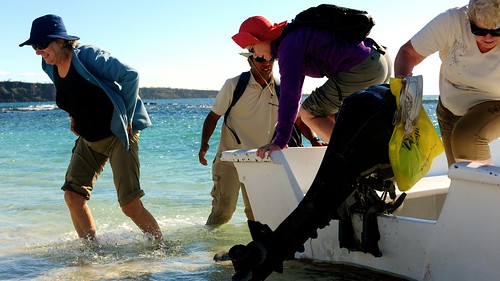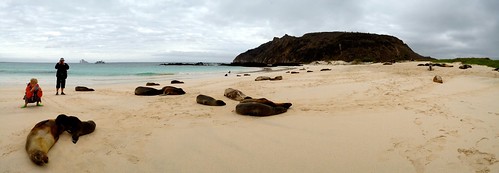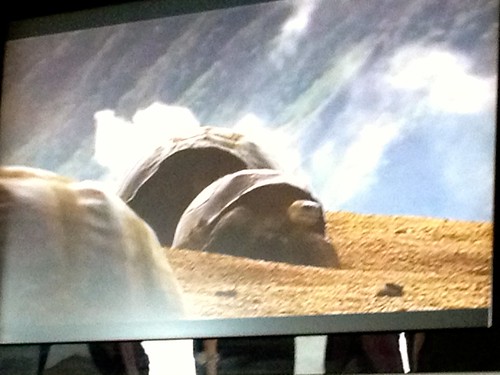More often than you might expect, I get questions about how to become a writer. Specifically, how to become a writer online. Just this morning, for instance, I spent half an hour on the phone with Kimberlee, who wants to make the move from academic to science writer but doesn’t know where to start.
I don’t feel like an expert on this subject — far from it — but I do have some opinions based on my personal experience. Here’s my advice for folks who want to become writers:
- Tell stories. When I speak at conferences, I try to hammer home this point. My talk at the first Fincon was about the power of story. I’ve stressed the importance of story at the Savvy Blogging Summit. For WDS 2013, I secretly fostered a story-based theme among the keynote speakers. Why? Because people relate to stories. Even if they can’t identify with you and your specific circumstances, stories help them relate to the point you’re trying to make. Story provides context. It’s illustrative. It’s one thing to describe the dangers of credit cards; it’s another to share actual anecdotes of people who’ve spent years trying to recover from stupid spending. When possible, tell a story.
- Be conversational. In college, I was taught to write in an academic style. Contractions were frowned upon. First person was forbidden. Everything was formal. As a result, everything was also lifeless and dull. In time, I’ve come to realize that good writing — especially for mass consumption — is conversational. In fact, when I work with actual magazine and book editors, they often ask me to be even more informal than I alraedy am. (I didn’t fully embrace contractions until working on Your Money: The Missing Manual. My editor was changing every instance of “you will” to “you’ll”, etc., which helped me realize that contractions make things easier to read. They’re an ally, not an enemy!)
- Develop your voice. Fifteen years ago, when I began to get serious about writing, my stories mimicked other authors. I wrote a story that was a combination of Charles Dickens and Patrick Süskind. I wrote a story that was all Faulkner and one that was clearly an homage to Hemingway. This sort of imitation is natural, but it’s not sustainable. In time, I found my own voice. I learned to write like J.D. Roth instead of like somebody else. Write in a way that feels easy to you. That’s your voice.
- Hone your craft. The best writers I know work to improve their skills. They read voraciously; as they do, they pay attention to how good writing works. After reading a great piece, they re-read it to find the form and struture. I once attended a reading by David Sedaris. I was fascinated by the way he’d calmly make a mark on the page every time the audience roared with laughter. He was learning from his audience — and I was learning from him. Good writers also take classes and read writing manuals (such as those listed below). Real writers generate a ton of material that never sees publication. I write all day long, but only about ten percent of what I produce ever sees the light of day. The rest is practice.
- Edit, edit, edit. Eighty percent of writing is editing. Okay, that’s not a scientific number, but you get the idea. You should spend more time editing a piece than you do writing it — generally much more time. When I was younger, I was one of those stereotypical writers who thought his work was art. It was sacred. Criticism bothered me, and I hated when others offered suggestions for improvement. When somebody edited my work, I felt like they were saying I’d done something wrong. After nearly a decade of writing every day, I have a different perspective. My goal is to communicate clearly with my audience. To do that, I need to edit my own material. I need to polish it, smoothing away the rough edges. And if other people want to help me do that work, so much the better!
- Write. If you want to be a writer, you have to write. Thinking about writing doesn’t make you a writer, and neither does talking about writing. A writer writes. End of story.
None of this is new, I know. But there’s a reason everyone offers the same advice. It’s because these are the things you need to do to become an effective writer. Like anything else, it takes practices to get good at this job. I often think of Malcolm Gladwell’s point in Outliers. He notes that research indicates that it takes about 10,000 hours of practice to become truly proficient at a skill. That’s five years of full-time work. Over the past decade, I estimate I’ve spent around 15,000 hours writing — maybe more. That’s enough time for me to feel comfortable with my craft, to reach a level where I can confidently say, “Yes, I’m a writer.”
At dinner recently, Kathleen (of Frugal Portland) and I talked about writing. She thinks she might register for a community college writing class to improve her skills.
“That’s a great idea,” I said. “I do that every few years. I know I write well, but there’s always room for improvement. I learn tons every time I take a class. And since one of my goals for 2014 is to write a novel, I feel like I should take a class again soon.”
Kathleen showed me the book she was reading, If You Want to Write by Brenda Ueland. “Have you heard of it?” she asked. “It’s awesome. She wrote it in 1938 as a guide to her writing students, but a lot of it isn’t even about writing. For instance, she talks about how you can jump-start the creative process just by going for a walk. She used to walk several miles a day, and she says it helped her write better.”
I smiled. “Yes, I’ve heard of the book,” I said. “It’s one of my favorites.” I opened Kathleen’s copy to the first page and pointed to the title of the first chapter: Everyone is talented, original, and has something important to say. “I’ve incorporated that idea into my personal philosophy. I truly believe it.”
“In fact, this is one of the books I push on people all the time. I always have a few copies on hand to give to aspiring writers. I have three at home write now.” (Actually, it turns out I have four copies here in my office.)
“Would you be interested in a list of my favorite books about writing?” I asked.
“Oh, yes,” Kathleen said.
“Done,” I said.
Here are three of my favorite books about writing:
- If You Want to Write by Brenda Ueland. This is an inspirational book that many return to in order to escape the dreaded writer’s block. (In fact, I may re-read a bit of it later today.)
- On Writing Well by William Zinsser. This book is primarily about writing nonfiction. It offers lots of advice about the actual craft of writing, including clarity, revision, tone, and more. This is another book I keep on hand to give away. (Also see Writing to Learn by the same author.)
- Weinberg on Writing: The Fieldstone Method by Gerald M. Weinberg. This flawed but brilliant manual describes the author’s method for organizing writing ideas. It’s sort of a left-brained approach to a write-brained activity. I think it’s especially useful for bloggers and magazine columnists.
There are many other books I like, including:
- Steering the Craft by Ursula K. LeGuin
- Writing Without the Muse by Beth Baruch Joselow
- Writing Down the Bones by Natlaie Goldberg
- On Writing by Stephen King
- Writing with Power by Peter Elbow
Many people I know like Bird by Bird by Anne Lamott (although, curiously, none of these people are writers). Most folks love Lamott’s style. I don’t. She has some good things to say, but I find her manner twee. It’s grating. I’m in a small minority, though, and you will probably love her, just like everybody else.
Every writer has room for improvement. Most of us write every day, and that’s great — that’s the best way to develop skill — but there are other things we could (and should) do to hone our craft. Take classes. Join writing groups. Read books. And, most of all, occasionally do work that requires an editor.

















































